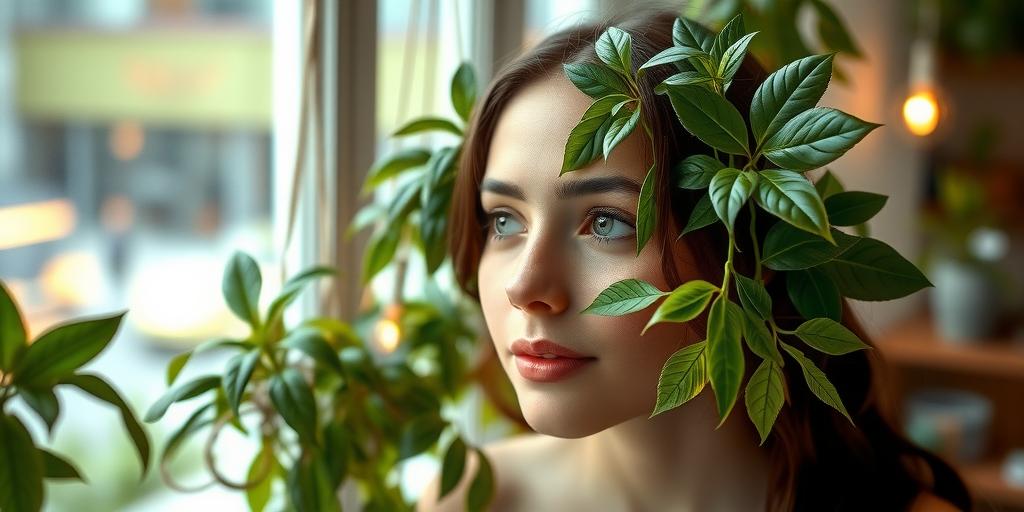
Essential Care Tips for Thriving Low Light Hanging Plants
Discover expert care tips for low light hanging plants to keep them lush and healthy! Learn the best varieties, watering techniques, and maintenance tricks for thriving indoor greenery.
Introduction
Did you know some of the most resilient houseplants thrive in low light? Whether you have a dimly lit apartment or a cozy corner that needs greenery, low light hanging plants are the perfect solution! From the elegant Pothos to the hardy Spider Plant, these beauties bring life to any space without demanding constant sunlight. In this guide, we’ll walk you through everything you need to know—from choosing the right plants to mastering their care. Let’s dive in!
Best Low Light Hanging Plants for Your Home
Pothos (Epipremnum aureum)
If you’re new to houseplants or just want something nearly impossible to kill, pothos is your best bet. This hardy vine thrives in low light and can tolerate occasional neglect. Its heart-shaped leaves come in various shades, from deep green to variegated gold and white. Pothos grows quickly, making it perfect for filling empty corners or draping elegantly from a hanging basket.
Spider Plant (Chlorophytum comosum)
Spider plants are another excellent choice for low-light conditions. They’re known for their arching green and white striped leaves and their ability to produce “pups”—tiny offshoots that dangle from long stems. These can be easily propagated to grow new plants, making spider plants a great option if you love sharing greenery with friends.
Philodendron Heartleaf
With its fast-growing vines and charming heart-shaped leaves, the philodendron heartleaf is a favorite among plant lovers. It adapts well to low light and requires minimal care. Just give it a little water when the soil dries out, and it will reward you with lush, trailing foliage.
String of Pearls (Senecio rowleyanus)
For something a little more unique, try the string of pearls. This succulent features trailing stems adorned with small, bead-like leaves. While it prefers bright indirect light, it can tolerate lower light conditions—just be careful not to overwater it. Its unusual appearance makes it a stylish addition to any space.
Peperomia
If you’re short on space, peperomia is a fantastic compact option. These small but mighty plants come in various textures and colors, from glossy green to deep red. They thrive in moderate to low light and require minimal watering, making them ideal for busy plant parents.
Ideal Placement for Low Light Hanging Plants
Avoid Direct Sunlight
Low light plants don’t need much sun, and too much direct light can scorch their leaves. Keep them away from south or west-facing windows where sunlight is strongest. Instead, opt for spots with filtered or indirect light.
North-Facing Windows or Shaded Corners
North-facing windows provide gentle, consistent light that won’t overwhelm low-light plants. If you don’t have a north-facing window, shaded corners of a room can also work well—just make sure there’s still some ambient light.
Rotate Occasionally
Plants naturally grow toward light sources, which can lead to uneven growth. To keep your hanging plants looking full and balanced, rotate them every few weeks so all sides receive equal light exposure.
Keep Away from Drafts and Vents
Sudden temperature changes from drafts, air conditioning, or heating vents can stress plants. Place your hanging baskets in stable environments where they won’t experience extreme fluctuations.
Watering Tips for Healthy Growth
Check Soil Moisture First
Overwatering is one of the quickest ways to kill a plant. Before watering, stick your finger into the soil—if the top inch feels dry, it’s time to water. If it’s still damp, wait a few more days.
Use Well-Draining Pots
Hanging plants need pots with drainage holes to prevent water from pooling at the bottom, which can lead to root rot. If your decorative pot doesn’t have drainage, use a plastic nursery pot inside it and empty excess water after each watering.
Mist Humidity-Loving Plants
Some plants, like pothos and philodendrons, appreciate a little extra humidity. A light misting every few days can help keep their leaves fresh, especially in dry indoor environments.
Reduce Watering in Winter
Plants grow more slowly in colder months, so they need less water. Cut back on watering frequency during winter to avoid soggy soil.
Soil and Fertilization Needs
Choose a Lightweight Potting Mix
Low light hanging plants do best in a well-draining, peat-based potting mix. Avoid heavy garden soil, which can compact and suffocate roots.
Fertilize Monthly (But Gently)
A diluted liquid fertilizer applied once a month during the growing season (spring and summer) will give your plants a nutrient boost. Skip fertilizing in winter when growth slows.
Avoid Over-Fertilizing
Too much fertilizer can cause salt buildup in the soil, leading to burned roots. If you notice white crust on the soil surface, flush it with water to remove excess salts.
Refresh Soil Every 1-2 Years
Over time, soil loses nutrients and can become compacted. Repotting your plants with fresh soil every year or two keeps them healthy and thriving.
Pruning and Maintenance Tricks
Trim Yellow or Dead Leaves
Removing dead or yellowing leaves helps redirect energy to healthy growth. Use clean scissors to snip them off close to the stem.
Pinch Back Leggy Vines
If your plant starts looking sparse, pinch back the longest vines to encourage bushier growth. The cuttings can even be propagated to grow new plants!
Wipe Leaves for Better Photosynthesis
Dust can block sunlight from reaching the leaves. Gently wipe them with a damp cloth every few weeks to keep them clean and efficient at absorbing light.
Check for Pests Regularly
Spider mites, mealybugs, and aphids can sneak in, especially in dry indoor conditions. Inspect your plants weekly and treat any infestations early with insecticidal soap or neem oil.
Troubleshooting Common Problems
Yellow Leaves
If your plant’s leaves are turning yellow, the most likely culprit is overwatering or poor drainage. Let the soil dry out more between waterings and ensure the pot has proper drainage.
Brown Tips
Brown, crispy leaf tips often indicate low humidity or chemicals in tap water. Try misting the plant more frequently or using filtered water for watering.
Slow Growth
If your plant isn’t growing much, it might need more indirect light or a nutrient boost. Move it to a slightly brighter spot or give it a gentle dose of fertilizer.
Drooping Vines
Drooping can mean underwatering or that the plant is root-bound. Check the soil—if it’s bone dry, give it a thorough drink. If roots are circling the pot, it’s time to repot into a slightly larger container.
Conclusion
Low light hanging plants are a fantastic way to add greenery to any space, even without bright sunlight! By choosing the right plants, placing them strategically, and following simple care routines, you can enjoy lush, trailing foliage year-round. Ready to transform your home into a green oasis? Pick your favorite low light hanger and get started today!
